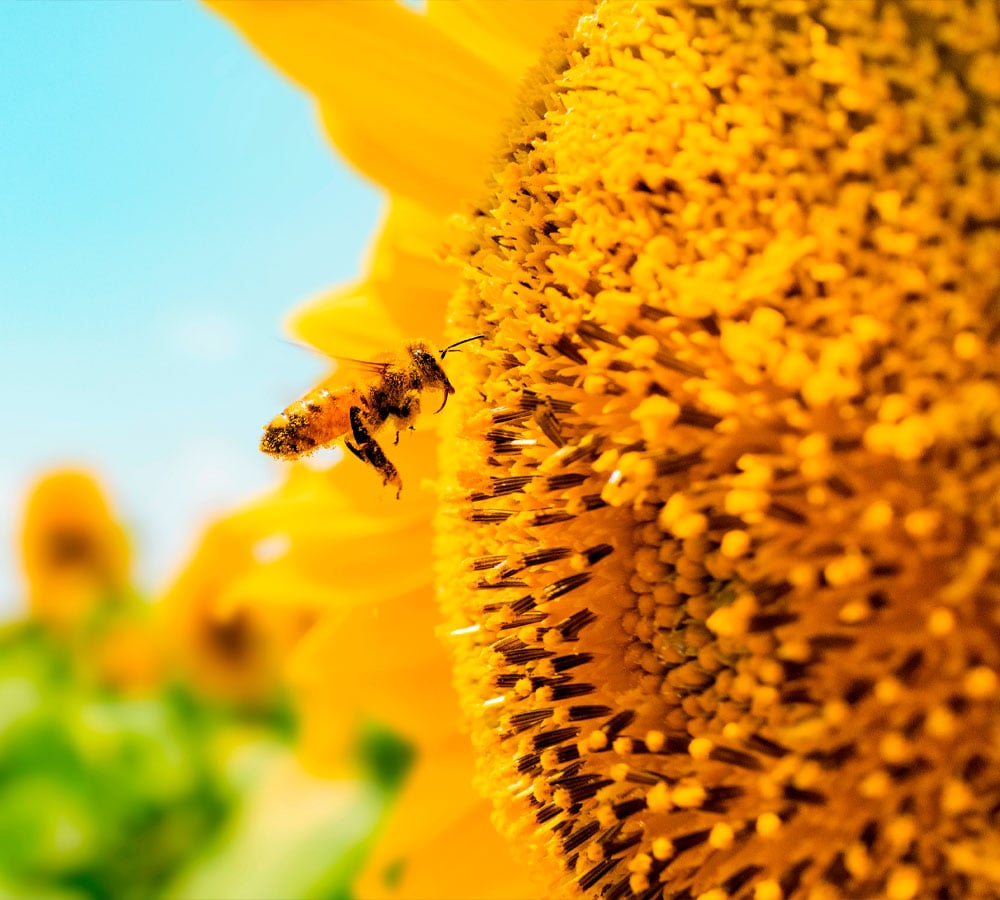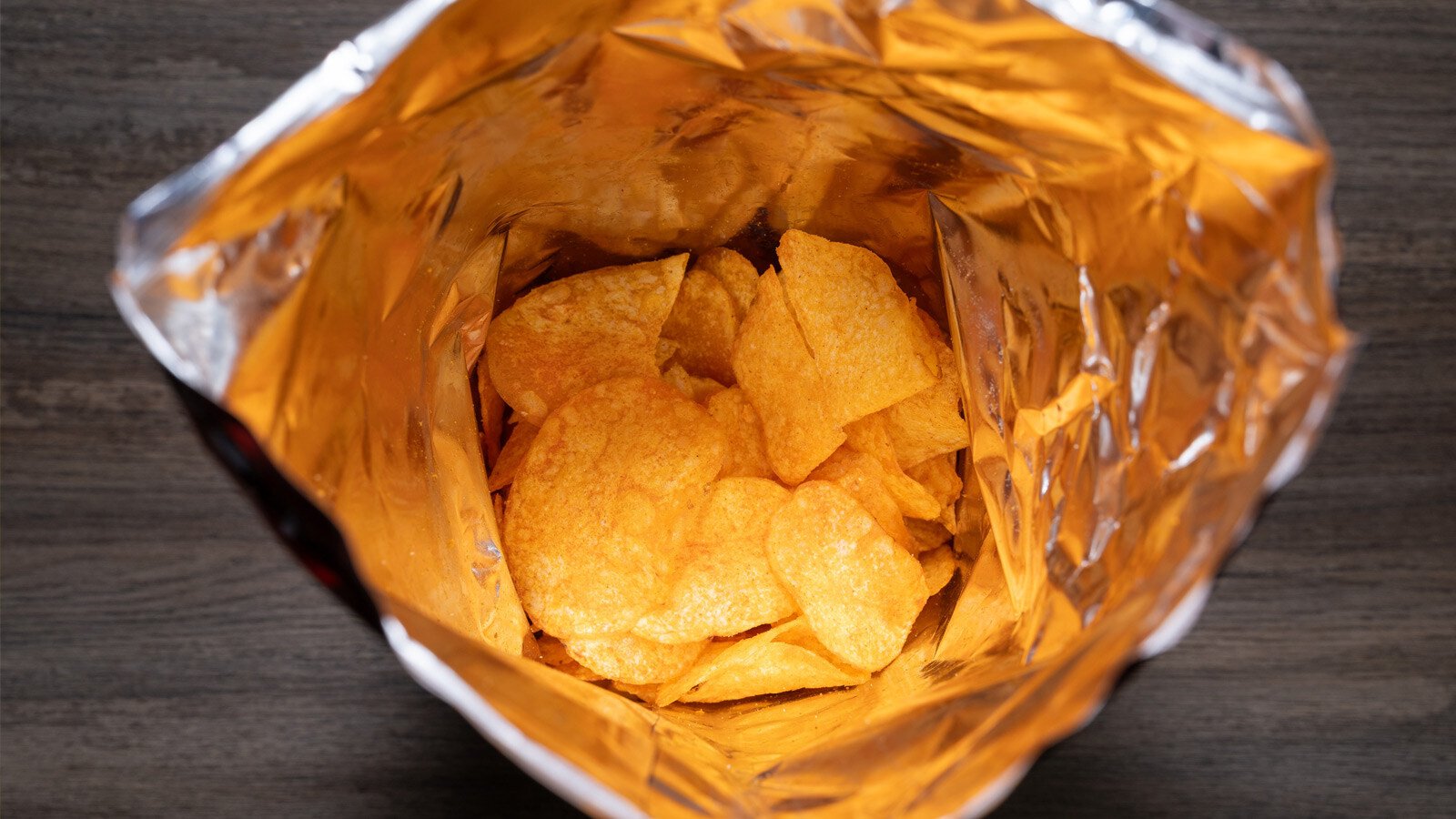Which waste streams end up in the residual waste by default, rightly or wrongly? In this series, we put items like chewing gum, wet wipes or stirrers piece by piece on a stage to discover together whether there are solutions for them. This week: packaging with an inner layer of aluminum.
No more residual waste
During Zero Waste Week, we said goodbye to the residual waste bin in the office. This immediately reduces residual waste because we are thinking more carefully about waste separation. But it also brings up challenges. Where do you put items that are normally residual waste or that have no clear destination? With us they now end up in a display case, which encourages us to look for solutions together.
Packaging with aluminum inner layer
Today we will discuss packaging with an inner layer of aluminum. This type of packaging is a composite packaging made of two or more different materials. Because of this property, separation and processing is challenging. In the showcase we found several items in this category, such as cup-a-soup bags, potato chip bags, packaging for cookies and also the foil of a pack of margarine.
These products are partially made of plastic or paper. Yet they should not be disposed of in plastic waste (PD) or waste paper because of the silver inner layer of aluminum. Due to the mixed material structure, plastic with aluminum or paper with aluminum, the packaging is not recyclable and this waste stream ends up in residual waste.
Notable exception chip bags
Today, potato chip bags are allowed in the PMD bin. In fact, there was a lot of consumer confusion, and these bags were one of the biggest disturbers, “pollutants” in PMD waste during disposal. But the bags, despite the change, are not being recycled with the plastic. Instead, they are removed from the collected plastic packaging waste and incinerated, recovering the energy released. To save sorters this extra operation, it is better to throw plastic containers with a metal layer, such as potato chip bags, directly into the residual waste. But even better is to look for an alternative on solution, more on that below.
Advantages
Why do producers choose this packaging? The inner layer of aluminum prevents light or air from reaching the food. Light can discolor the product, think chips that turn too yellow. Air can cause the product to smell different. Brands want their products to remain of reputation quality, the quality they are known for. This high quality must be maintained at least through the expiration date.
So the inner layer of aluminum is ideal for preserving quality, but not for processing and reuse. It is desirable to collect the plastic and aluminum separately, but this is not possible with combined packaging. The two materials are mixed and are too tightly bound together.
Comparison with drinking containers allowed at PD
It is noteworthy that drinking containers, such as cardboard milk cartons with a plastic coating, are collected separately through the PD system. These packages also consist of combined materials. How does this separate collection compare to similar composite packaging with an aluminum inner layer?
That's where the shoe pinches. The process at processors is set up for drinking cartons, but not for packaging such as potato chip bags. Expensive technical facilities are needed to separate this material, if separation of the mixed materials is possible at all. In addition, this type of food packaging often weighs little, making the financial returns to the collector low.
Solutions or alternatives to composite packaging
LLet's look together for solutions or alternatives. Good idea? Mail it to us, we'll work on it!
Solution 1: choose mono, plastic only or paper only
Packaging made entirely of plastic may go to PD. Completely paper packaging may go with the waste paper. So it is an idea to choose only one material in packaging instead of a combination of materials. That way, the waste stream can go with existing processing systems. In many cases, all-plastic packaging or paper packaging works well enough to preserve the quality of the product.
Solution 2: redesign and less material
It makes sense to investigate whether the use of packaging materials can be reduced. By redesigning packaging, significant savings can often be made in materials, and thus in costs and waste. Take, for example, the plastic containers for nuts in supermarkets; instead of a sturdy plastic lid, a thin layer of plastic film is sometimes sufficient.
Solution 3: endlessly reusable material
Another alternative to composite packaging is choosing glass, such as glass jars for storing groceries. Glass can be infinitely reused without loss of quality. Packaging-free online supermarkets, such as Pieter Pot, for example, operate this way, eliminating packaging waste.
However, it is important to also consider the fact that glass is heavy, which makes transporting it cost more energy and emissions, compared to plastic or paper.
Solution 4: innovative packaging
When appropriate for the product, one option is to consider innovative packaging that requires few resources or is environmentally friendly to process. Examples include biodegradable packaging or even edible packaging.
Other solutions? We'd love to hear it
Do you have ideas or a solution to avoid or sustainably process this waste stream? Let us know. Set up an (online) meeting or send us an email with your idea or innovation.













